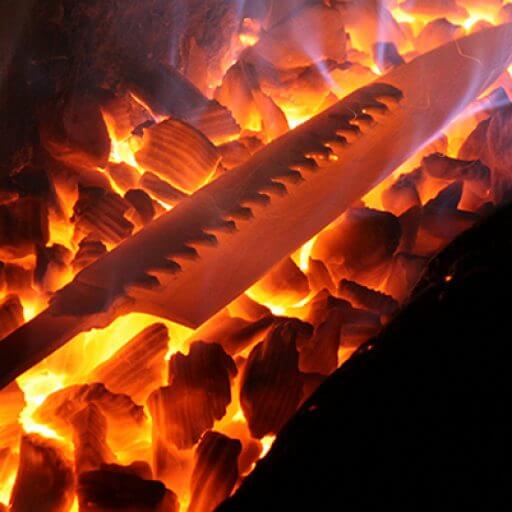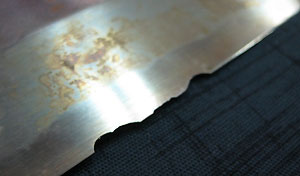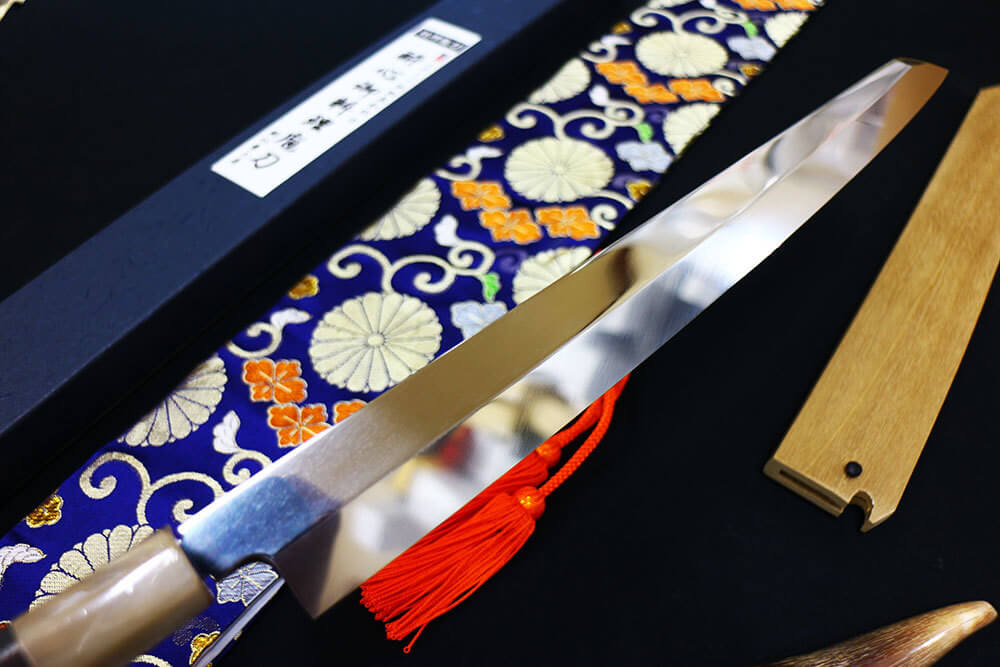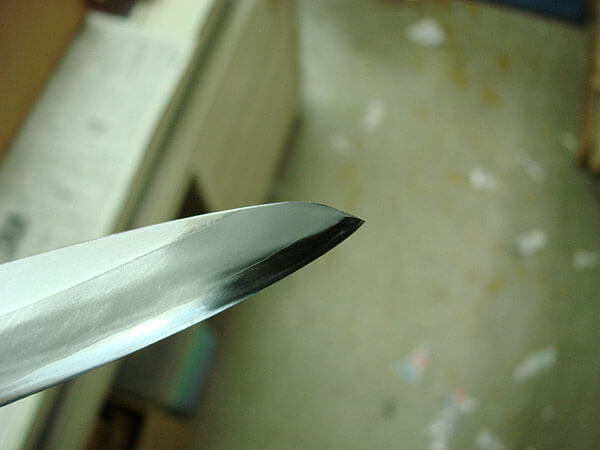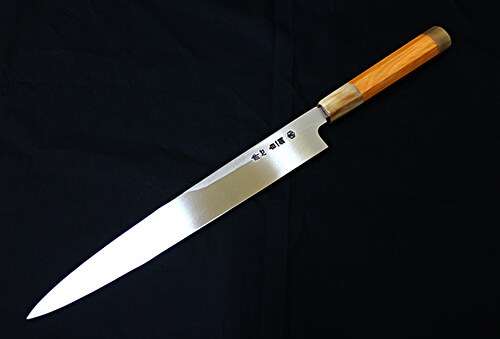Gyuto sharpening

Today, I worked on honing the smaller blades of the SP-INOX knife series, totaling several dozen knives. The chef’s knives made from tough and resilient steel can maintain their sharpness for a considerably long time once a good edge is achieved. However, if the edge is left with a somewhat imperfect convex shape during sharpening, it may result in a slippery blade despite still being sharp. Achieving that intense cutting sensation akin to traditional Japanese knives can be challenging.
There are moments when I question if it’s appropriate to impart such a beautiful edge to chef’s knives before they are shipped—isn’t this essentially honbaduke? It’s a humorous contemplation (laughs).
For Western-style knives, aligning the edge angle with the steel type seems to easily create a sharp edge. Maintaining a consistent angle for both sides during sharpening ensures a blade that holds up well and is easy to maintain. However, this approach may sometimes compromise edge retention and cutting efficiency, necessitating a careful balance to achieve the desired edge performance.
During this process, the technique of honing plays a significant role—a blend of personal use, intended application, and sharpening methodology to tailor the edge according to specific needs.
One of the trickiest aspects of sharpening a resilient knife lies in handling the convex edge. Sharpening from the front and then from the back can sometimes cause tiny convex edges to form unpredictably.
Trying to remove these edges during sharpening might inadvertently create new ones. It’s surprisingly easier to address this by gently sliding the knife back and forth on the whetstone.
*It’s better to do this while pulling the knife towards you.
Of course, the whetstone surface should be flat and free of clogs. The approach is more about honing the blade rather than aggressively shaping it. It’s about delicately adjusting the contact point with the convex edge on the blade.
If the convex edge isn’t coming off using this technique, then honing both sides to extend the blade’s tip might be a good approach.
When using a blade honed in this manner to cut ingredients and it feels like the blade is giving in to the cutting board, it’s possible that the blade was honed too thin, surpassing the steel’s potential. Or maybe the cutting board is too firm.
While using newspaper or similar material to remove the convex edge is an option, putting in the effort to remove it with a whetstone yields better results. It ensures a sharp Western-style knife with great cutting precision!
I’m referring to whetstones categorized as finishers, typically #2000 and above.
Please choose the type of whetstone that matches the steel you are working with!
Expressing all this in words can be a bit challenging, isn’t it?
hibishugyo
- 2011-12-02
